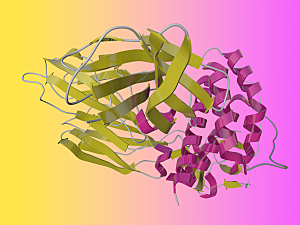Ulcerative colitis (UC) is thought to be caused in part by dysregulation of the host immune system, including inadequate response of mucosal regulatory T cells. In mouse models, low-dose interleukin 2 (IL-2) has been shown to expand peripheral Tregs and ameliorate UC and other inflammatory diseases.
Researchers at Brigham and Women’s Hospital recently published data from an open-label phase 1b/2a trial suggesting induction therapy with low-dose IL-2 is safe for patients with UC and suppresses the disease.
Jessica R. Allegretti, MD, MPH, medical director of the Crohn’s and Colitis Center within the Division of Gastroenterology, Hepatology and Endoscopy, Scott B. Snapper, MD, PhD, the chief of the Division of Gastroenterology, Hepatology, and Nutrition at Boston Children’s Hospital and a physician–scientist in the Center at the Brigham, and colleagues report their observations in Gastroenterology.
Methods
The participants in the eight-week study were adults with active UC (total Mayo score 6–10) who had been nonresponders to at least one UC therapy. Initially, three escalating dosages of daily subcutaneous IL-2 (aldesleukin) were tested:
- 4 patients received 0.3 x 106 IU/m2/day (dose A)
- 7 received 1 x 106 IU/m2/day (dose B)
- 5 received 1.5 x 106 IU/m2/day (dose C)
Clinical response was defined as a decrease in total Mayo score by 3 points or 30% at week 8. Clinical remission was defined as a total Mayo score of 2 with no individual subscore exceeding 1, including the week 8 Mayo endoscopic score.
Dose Finding
No participants who received dose C experienced dose-limiting toxicity, but none demonstrated clinical response, and all reported malaise. Therefore, dose B was deemed the maximum efficacious dose. Per protocol, an additional 10 patients were recruited to receive that dose, for a total of 17 participants at that dose, 26 were enrolled study-wide.
Safety and Tolerability
Overall, low-dose IL-2 was well tolerated. Mild adverse events across all doses in >10% of patients were injection site reactions, fever, and malaise. There were no serious adverse events and no deaths.
One patient had to be withdrawn because of a maculopapular rash at the injection site. Six more patients withdrew because of uveitis (n=1), low-grade systemic symptoms (n=2), or exacerbation of UC (n=2).
Clinical Response and Remission
Treatment for eight weeks was associated with improved total Mayo score in most participants. Among study completers:
- Clinical response rate across doses—53%
- Clinical response rate at dose B—69%
- Clinical remission rate across doses—21%
- Clinical remission rate at dose B—24%
Treg Expansion
Expansion of peripheral Tregs was defined as a >2-fold increase (out of total CD4+ lymphocytes) compared with the pretreatment level. IL-2 did expand peripheral Tregs:
- Dose A—67% of participants
- Dose B—100%
- Dose C—100%
Peripheral Tregs expanded in 100% of responders and 92% of nonresponders.
Laying the Groundwork
This trial’s clinical response and remission rates are on par with results achieved with established biological therapies in UC. Altogether, the results suggest that low-dose IL-2 should be evaluated in larger trials as a treatment for UC.
The team is currently enrolling patients in a low dose IL-2 trial for the treatment of moderate to severe Crohn’s disease. Anyone interested should contact the lead trial coordinator Heidy Cabral by email at hjcabral@bwh.harvard.edu.
